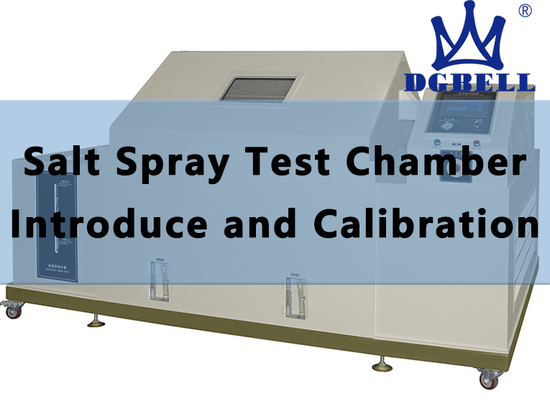
#Industry News
Temperature Cycling Test Chambers: Product Stability Test When Exposed to Extreme Temperature
Temperature Cycling Test Chambers: Product Stability Test When Exposed to Extreme Temperature
Temperature cycling test or thermal cycle testing is done on substances to determine the immunity of vulnerability to alternating extremes of low and high temperatures. You can utilize temperature cycling test chambers to test nearly all commercial goods to determine how they withstand extreme temperature changes. The intent of analyzing a product under these conditions is to detect changes in the goods’ characteristics and assess the failure incidence of distinct substances and thermal expansion coefficients.
“Temperature cycling test chambers may ascertain parts and solder joints are capable to withstand shallow and high temperatures, in addition to their capacity to tolerate cyclical exposures to intense temperatures.”
A thermal mismatch of substances can cause damage to the product. The thermal cycling test chambers can evaluate cycling rates along with other evaluation conditions. Operating and storage temperature restrictions to be considered are those defined by the manufacturer. It plays a massive role in the eligibility testing for products before being released for manufacturing.
A Quick Overview of Temperature Cycling Test Chambers
What is the Temperature Cycling Test Chamber/ Thermal Cycling Test Chamber?
Temperature cycling test chambers are perfect for simulating a broad array of humidity and temperature conditions. The testing chamber is acceptable for analyzing the fluctuations of devices. Electric, electronic goods, machines, and components beneath the rapid temperature change and the gradient requirements benefit from streamlined, contemporary scroll engines to deliver fast temperature cycling little form elements.
Temperature cycling test chamber enables you to carry out your thermal evaluation temperature profiling right where you want it – in your test seat, on your manufacturing floor, or your evaluation lab. Also, the thermal cycling test chambers systems have high thermal air flow systems that utilize thermal testing, quick temperature cycling, and apparatus temperature characterization. So, you can test different components, hybrids, modules, PCBs, and other digital and non-electronic assemblies at exact temperatures ranging from -90°C to +225°C.
How Do Temperature Cycling Test Chambers Work?
Thermal Cycling is one room evaluation that slowly moves merchandise from 1 extreme to another at 5C to 15C each minute. In this evaluation, the cold temperatures may range from -25C – -40C, along with the hot temperatures vary from 65C to 100C. Both evaluations have the consequence of inducing growth of this merchandise and hastening failures brought on by expansion. Instead, we choose more comprehensive temperature ranges in the event. The evaluation aims to validate the component’s capacity to survive under specific conditions that exceed their highest possible score. The test room is capable of supplying and controlling the specified temperatures at the zones that are working.
The machine set internal components to connect to the airstream that there’s substantially no airflow barrier. When special mounting is needed, it needs to be specified. The transition rate could be corrected to limit thermal pressures and permit assurance of components attaining the temperature. You will find hold times known as soaks at predetermined temperatures to ensure that the parts reach the anticipated temperature. Faster ramp prices are often better in manufacturing, but on the opposite side, care has to be taken not to worry about the components beyond what they can resist. Temperature cycling test evaluation is usually a sustained grip at a specified temperature (usually hot) to confirm the functional parameters in a particular environment with time.
How to Use Temperature Cycling Test Chambers?
Regular temperature cycling test chambers consist of one hot room and one cold place. Besides, the evaluation samples are automatically moveable between the two sections with an elevator-type mechanism. It usually produces a lesser speed of temperature change when compared with both room procedures. You can do the temperature cycle evaluation in chambers by controlling the number of cycles, live times, transfer times, or fall prices. You can utilize elevator-type enclosures when ramp prices between the low and higher temperature extremes must happen at a quick speed, such as the MIL-STD-883 system. In case a slower fall speed between temperature extremes is needed, just one temperature cycle test room is most suitable. By employing a single-chamber article of gear, you can set a predetermined, slower ramp (by way of instance, 10°C per second). Power Saver Cycle testing involves operationally electrically biasing apparatus under different conditions.
Types of Temperature Cycling Test Chambers?
There are two forms of temperature testing which while similar in title, are extremely different in their real procedures. They are-
Temperature/Thermal Cycling Test
Thermal Shock Test
Thermal Cycling Vs. Thermal Shock Test: Which One is Right for You?
The largest factor in analyzing this way is that the ramp rates of the test room to both temperature extremes. Based on the way you need to check your goods; you can change the ramp rates to satisfy the degree of stress you would like to place on the item. The heartbeat is essential to the evaluation, as it’s what applies the degree of pressure to the test room. Additionally, the thermal cycling test has soak periods in which the item is left at a particular temperature level to “soak” in that thermal illness.
At a multiple compartments thermal shock test room, the room has two (or 3) zones. One zone is the upper-temperature limit, and another area is the reduced temperature limit. You can use another chamber next for ambient temperature vulnerability. The largest factor in thermal shock testing is the healing period. The retrieval period applies to two regions in analyzing based on what standard we analyze. It may either apply to the solution or the atmosphere. When it’s air recovery, it usually means this temperature’s atmosphere must recuperate to place temperature once we introduce the item. Item recovery means the product must reach the set temperature in a particular quantity after submitting it into the zone.
We use assembled PCBs using Thermal Cycling because the rapid transitions connected with thermal shock can lead to temperature differentials between the PCB substrate as well as the attached chips. Placing pressure on the interconnecting solder joints could cause a premature joint collapse that wouldn’t occur in real life.
Utilizing operational evaluation of assembled PCBs after Thermal Shock to ascertain the PCB failures (fractures and IP Separation) could be problematic.
Conclusion
A thermal cycling life evaluation is to realize how the damage happens. Knowing the collapse mechanism lets you design a test. You can interpret and estimate the anticipated life during usage. If you toss a couple of units into a thermal cycling profile, how will you analyze the outcomes? Otherwise, it is time to learn and receive the maximum value from the testing.





